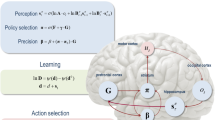Abstract
Linguists‘ intuitions about language change can be captured by adynamical systems model derived from the dynamics of language acquisition.Rather than having to posit a separate model for diachronic change, as hassometimes been done by drawing on assumptions from population biology (cf.Cavalli-Sforza and Feldman, 1973; 1981; Kroch, 1990), this new modeldispenses with these independent assumptions by showing how the behavior ofindividual language learners leads to emergent, global populationcharacteristics of linguistic communities over several generations. As thesimplest case, we formalize the example of two grammars and show that eventhis situation leads directly to a nonlinear (quadratic) dynamical system.We study this one parameter model in a variety of situations for differentkinds of acquisition algorithms and maturational times, showing howdifferent learning theories can have very different evolutionaryconsequences. This allows us to formulate an evolutionary criterion for theadequacy of grammatical and learning theories. An application of thecomputational model to the historical loss of Verb Second from Old French toModern French is described showing how otherwise adequate grammaticaltheories might fail the evolutionary criterion.
Similar content being viewed by others
References
Bickerton, D.: 1981, Roots of Language, Karoma Press, Ann Arbor.
Bickerton, D.: 1990, Language and Species, University of Chicago Press, Chicago.
Cavalli-Sforza, L. and M. Feldman: 1973, ‘Cultural Versus Biological Inheritance: Phenotypic Transmission from Parent to Children’, American Journal of Human Genetics 25, 618–637.
Cavalli-Sfbrza, L. and M. Feldman: 1981, Cultural Transmission and Evolution: A Quantitative Approach, Princeton University Press, Princeton, New Jersey.
Chomsky, N.: 1981, Lectures on Government and Binding, Foris Publications, Dordrecht, Netherlands.
Clark R. and I. Roberts: 1993, ‘A Computational Model of Language Learnability and Language Change, Linguistic Inquiry 24(2), 299–345.
Gibson, E. and K. Wexler: 1994, ‘Triggers’, Linguistic Inquiry 25(4), 407–454.
Hare, M., and J. Elman: 1995, ‘Learning and Morphological Change’, Cognition 56, 61–98.
Kroch, Anthony S.: 1990, ‘Reflexes of Grammar in Patterns of Language Change’, Language Variation and Change, 199–243.
Lewontin, Richard: 1978, ‘Adaptation and Evolutionary Theory’, Studies in the History and Philosophy of Science 9(3), 181–206.
Lightfoot, D.: 1991, How to Set Parameters, MIT Press, Cambridge, MA.
Niyogi, P.: 1994, ‘The Informational Complexity of Learning From Examples’, Ph.D. thesis, Massachusetts Institute of Technology, Cambridge, MA.
Niyogi, P. and R. C. Berwick: 1994, ‘A Markov Model for Finite Parameter Spaces’, Proc. of the 32nd ACL Conference, Las Cruces, New Mexico.
Niyogi, P. and R. C. Berwick: 1996 ‘Populations of Learners: The Case of Portuguese Language Change’, paper presented at the Brazilian Workshop on Language Change, University of Sao Paolo, Sao Sebastio, Brazil, August 1996.
Author information
Authors and Affiliations
Rights and permissions
About this article
Cite this article
Niyogi, P., Berwick, R.C. Evolutionary Consequences of Language Learning. Linguistics and Philosophy 20, 697–719 (1997). https://doi.org/10.1023/A:1005319718167
Issue Date:
DOI: https://doi.org/10.1023/A:1005319718167




